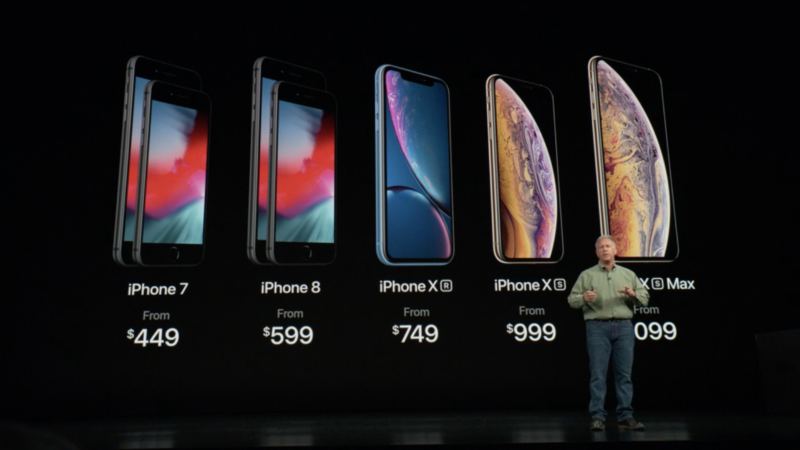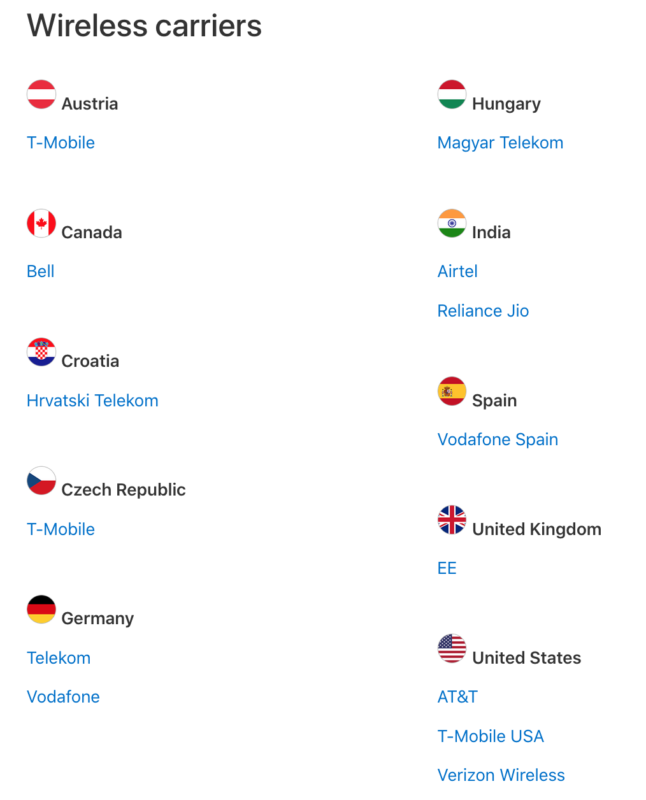If we dial back to earlier this week, Apple released its latest versions of its iPhone range – with some odd names:
- Apple iPhone Xr (the single rear camera “budget” model with a LCD screen, and multiple coloured casings)
- Apple iPhone Xs (the follow-on from the iPhone X)
- Apple iPhone Xs MAX (
the updated version from Boeing with better aerodynamics and new enginesthe version with the large screen)

The Apple 2018 Phone range – some with eSIM’s in them – Image, Apple via iPhone LiveStream
Let’s skip the names, but one of the things that might be useful for travellers. The introduction of Dual SIMs in an iPhone.
A SIM card (or Subscriber Identity Module) are the little smart chip that tells a mobile phone carrier who you are, and what you can do with the account. Apple in their infinite wisdom will be introducing a variant of it – the eSIM – an embedded SIM card in your phone.
The idea could work one of two ways:
- The eSIM is your primary line, with your carrier provisioning cellular service the phone with the eSIM, leaving the physical SIM socket empty.
- The physical SIM socket is filled in with your primary carrier, and you provision extra services on the road with eSIM.
So, all well and good. Except the launch carriers for eSIM are rather… slim, with 10 countries and 16 carriers taking part at the launch phase.

Data correct 16th September 2018 – Data, Apple.com https://support.apple.com/en-gb/HT209096
eSIM coverage will also be supported by two global carriers who peer off other connectivity providers:
In addition, eSIM will not be enabled on the launch of the new iPhones, rather it will require an iOS 12 update to allow it to be used. You will also need to use an unlocked device too according to Apple.
It’s a bit of a faff to say the least, with the limitations of a list of carriers supporting eSIM. But Apple has a solution for that – an iPhone XrXS/XS MAX that supports two physical SIM Cards. There’s just one problem – these phones are for sale in China, Hong Kong or Macau.
Which is less than optimal.
Whilst the price of roaming has come down worldwide thanks to some rather good pricing, there are times when you are outside a carrier’s range, or their peering costs are too expensive (for example, I can use my Three UK plan in Singapore or the USA with no additional cost, but if I go to Malaysia, the price increases to £6 per MB, Japan and the UAE is £3 per MB).
Whilst eSIM offers a reasonable solution, there are consideration for your coverage until 1) it’s switched on and 2) if the coverage you need exists.
Until then, I would consider a device like the SkyRoam Solis if you need just need data connectivity, or buying local SIM cards if you need voice and data, and putting your normal SIM card away whilst you’re travelling.
Or Apple could do the sensible thing, and release the iPhone Xr/Xs/Xs MAX with a two Physical SIM sockets worldwide.
And we all know the chances of that.
Welcome to Economy Class and Beyond – Your no-nonsense guide to network news, honest reviews, with in-depth coverage, unique research as well as the humour and madness as I only know how to deliver.
Follow me on Twitter at @EconomyBeyond for the latest updates! You can also follow me on Instagram too!
Also remember that as well as being part of BoardingArea, we’re also part of BoardingArea.eu, delivering frequent flyer news, miles and points to European readers
